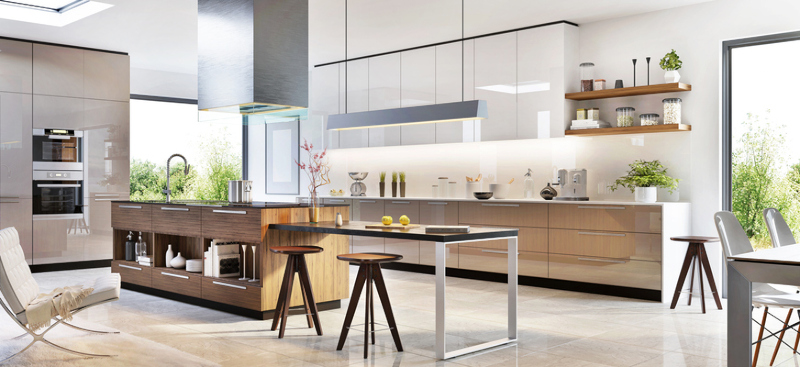Kitchen remodeling continues to be one of the hottest trends in home renovation, and kitchen islands are more popular than ever. Why? Older kitchen layouts may not fit the way we live and work today. Creating a space that is beautiful and functional is high on the list of needs when renovating a kitchen.
How do you make your kitchen more user friendly?
Kitchen islands are a feature you may want to add or update. But what kind of kitchen island is right for your space and your family? Just try an online search for ‘kitchen island ideas’ and a treasure trove of images and articles fill the page.
You’ll find the DIY stand-alone, portable islands or you may want the more expensive custom designed and installed kitchen island.
What do you need to keep in mind when it comes to a kitchen island that works for you?
Here Are 5 Tips to Keep in Mind
- Most kitchens are busy places that get a lot of traffic. Form and function are important considerations. Clean lines and easy care surfaces go a long way to keep your kitchen island easy to maintain. If you are raising children, you’ll want to choose a surface top that is scratch and stain resistant. A surface you can wipe up easily and one that withstands heavy use.
- How big is your kitchen? Think about these numbers as you imagine your kitchen with an island workspace. Advice varies on the average size of a kitchen island, with minimum width being 36 inches and a minimum length of 40 inches with some islands measuring 40 inches wide and 80 inches long. The minimum height is 36 inches. However, if you want to use bar stools for seating, then the height should be at least 42 inches. Don’t forget, the recommended clearance for getting around the island is 36 to 42 inches. Make sure the island is designed to meet your needs, within the room space you have to work with before moving forward.
- Will your island accommodate a bar sink? Or maybe you need a two-burner cooktop. If you want to use the island mainly as a work surface, you may want special features and appliances. If it will be used as a combined gathering space, and work surface, you will want to make room for seating. Don’t forget the outlets. It’s a good idea to ensure that you have outlets for your appliances and for charging your family’s many tech tools. Especially if they like gathering around you doing homework or even helping to prepare dinner.
- What about storage? A kitchen island can be designed to look beautiful, be functional and provide more storage. Your needs will dictate the balance between those elements. Remember that more seating means less storage space, as you’ll need 12 inches of under-counter space for the stools. Again, looking at how you envision using your kitchen island will guide the design, as will the overall size and layout of your current kitchen.
- Remember to have fun when choosing materials and colors. You can go bold, with bright colors or contrasting materials. Design elements like open shelving provide spaces to display everything from easy to reach dishware, to your favorite cookbooks. Be creative when you think about seating. The design of your stools can add extra color and pizzazz or a touch of elegance, it’s up to you. Lighting is another element to consider, and you have a wide range of choices to set the mood.
Before moving forward, you may want to check with your architect to get a better idea of what your current kitchen is best suited for when it come to the size and style of an island. If your kitchen is on the smaller side, a peninsula addition might prove to be a better choice.
A version of this post first ran in 2021.


